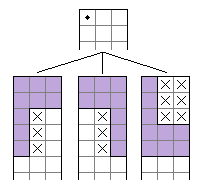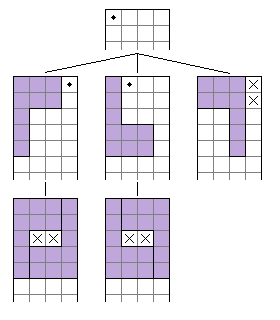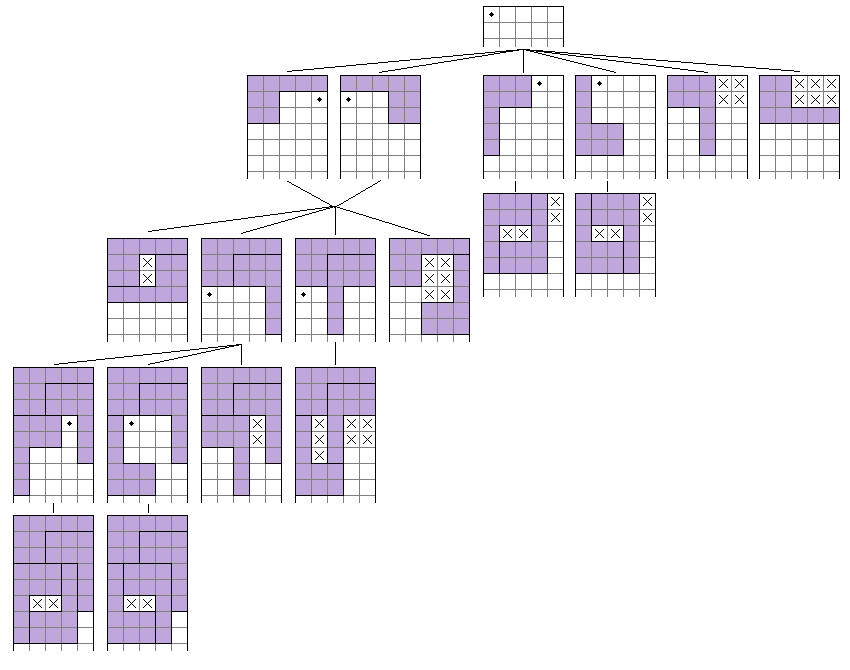Formulas¶
$N(w; h)$ - number of ways to tile $w\times h$ rectangle (including symmetric solutions)
$T(w; h) = \begin{cases} 1, & N(w; h) \geq 1 \\ 0, & \text{else} \end{cases}$ - tileability function, $1$ if tiles rectangle, $0$ otherwise
$A(w; h) = \left(N(w; h)\right)^{\frac{1}{wh}}$ - average number of ways to tile cell in $w\times h$ rectangle (including symmetric solutions)
$G(T; x; y) = \sum_{w=1}^{\infty}\sum _{h=1}^{\infty}T(w; h)x^wy^h$ - bivariate generating function of $T(w; h)$
$G(A; x; y) = \sum_{w=1}^{\infty}\sum _{h=1}^{\infty}A(w; h)x^wy^h$ - bivariate generating function of $A(w; h)$
$N(1; n) = T(1; n) = 0, \qquad n \geq 1 \tag{1}$
$N(2; n) = T(2; n) = 0, \qquad n \geq 1 \tag{2}$
P2 enneomino has width and height greater than $2$ thus it does not fit into $1 \times n$ and $2 \times n$ rectangles. Q.E.D.
$N(3; n) = T(3; n) = 0, \qquad n \geq 1 \tag{3}$
If P2 enneomino tiles $3 \times n$ rectangle then all rectangle cells should filled. Top left corner (marked with dot on image) may be covered in only three ways. All of them have untileable holes. Q.E.D.

$N(4; n) = T(4; n) = 0, \qquad n \geq 1 \tag{4}$
If P2 enneomino tiles $4 \times n$ rectangle then all rectangle cells should filled. Top left corner (marked with dot on image) may be covered in only three ways. All of them have untileable holes. Q.E.D.

$N(5; n) = T(5; n) = 0, \qquad n \geq 1 \tag{5}$
If P2 enneomino tiles $5 \times n$ rectangle then all rectangle cells should filled. Top left corner (marked with dot on image) may be covered in only six ways. First two are symmetric and merged in proof. All of them have untileable holes. Q.E.D.

$N(6; n) = 2 \times N(6; n - 6), \qquad n \geq 7 \tag{6}$
$N(15; n) = 16 \times N(15; n - 12), \qquad n \geq 13 \tag{7}$